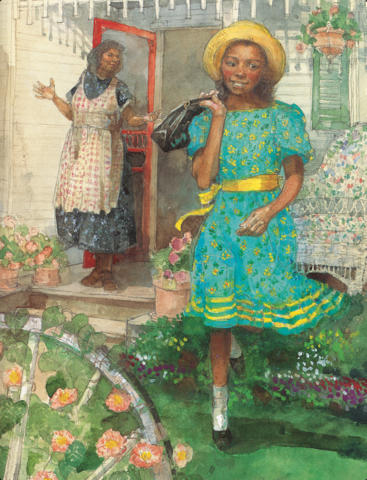Goin' Someplace Special
Goin' Someplace Special was written by Patricia C. McKissack and illustrated by Jerry Pinkney. Patricia C. McKissack was the Newbery Honor, Coretta Scott King Award-winning author of The Dark-Thirty and Porch Lies an ALA Notable Book. She collaborated with Jerry Pinkney on Goin' Someplace Special (Coretta Scott King Award winner) and Mirandy and Brother Wind (Coretta Scott King Award winner and Caldecott Honor Book. [1] Retrieved January 31th, 2021
Summary
The story is about a young African-American girl named Tricia Ann, she lives in Nashville, during the 50s she eagerly sets off on her own for the first time, going across town to what she calls "someplace special." The prejudice and discrimination she meets along the way deflates her hopeful spirit somewhat, but her grandmother's words and the promise of the public library where "all are welcome" help her handle the hurt, and make it to her destination. [2] Retrieved January 31th, 2021
Pros
Kathryn commented this book on one site, she mentioned that we learn in the Author's Note at the end that this story is based on Patricia McKissack's own girlhood experiences. The Note is wonderful and really brought some aspects of segregation into a new light for me. For example, McKissack talks about how many families had long internal debates on when was the appropriate time to let their children experience the world beyond their own black communities. That is, when did they want to introduce their children to segregation? And, in 'Tricia's case, when to let them face it alone, with only the memory of their wisdom to guide them rather than their actual helping hand. In her own ignorance, she never thought about children in that time being shielded from segregation, she thought it was just part of everyday life that they always lived with. It adds a deeper poignancy to the issue to think that parents actually had to choose when to expose their children to something so ugly. [3] Retrieved January 31th, 2021
Publishers Weekly wrote their reviewed of this book on their site, an afterword explains McKissack's connection to the tale, and by putting such a personal face on segregation she makes its injustices painfully real for her audience. Pinkney's (previously paired with McKissack for Mirandy and Brother Wind) luminescent watercolors evoke the '50s, from fashions to finned cars, and he captures every ounce of 'Tricia Ann's eagerness, humiliation and quiet triumph at the end. [4] Retrieved January 31th, 2021

